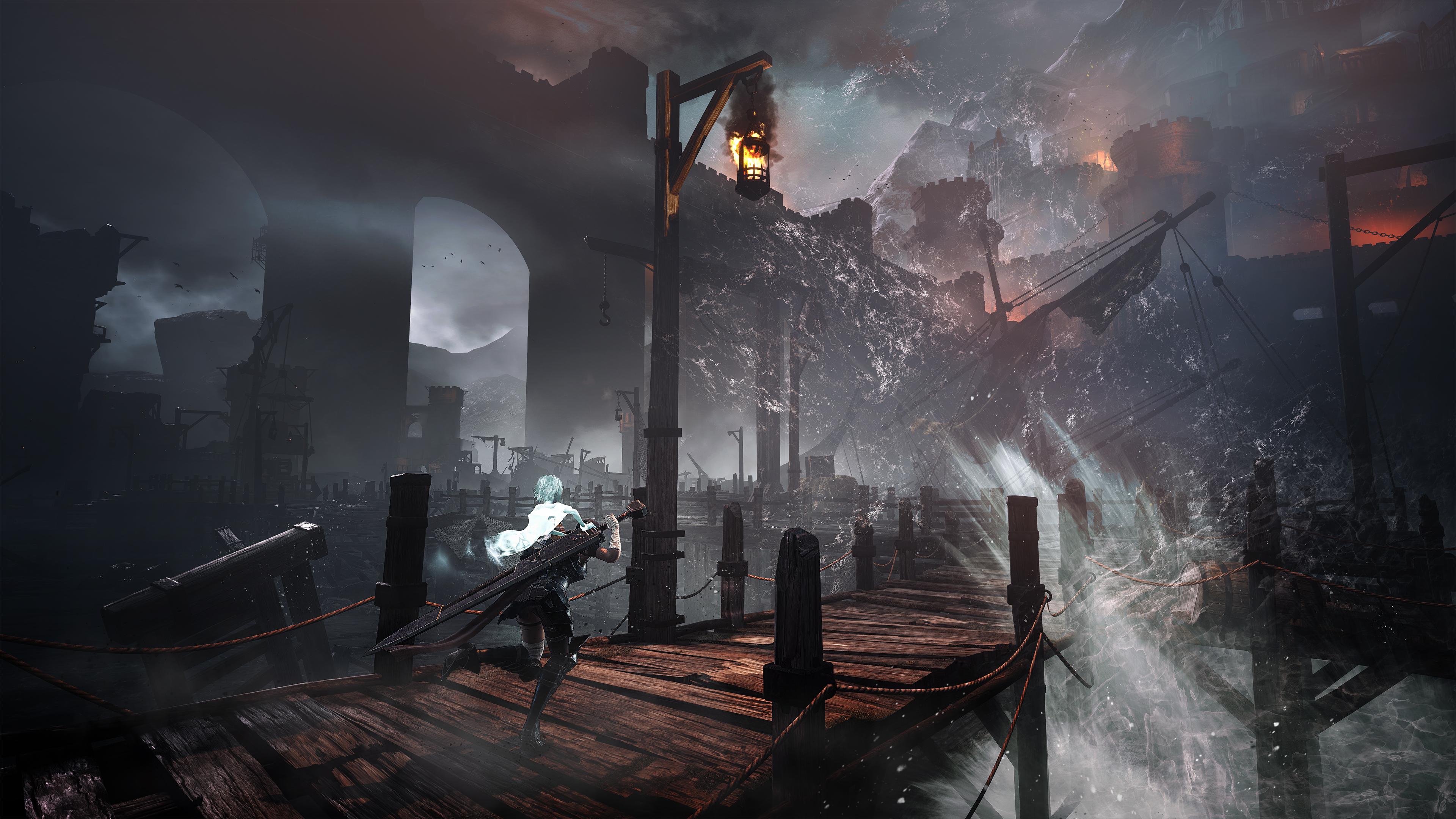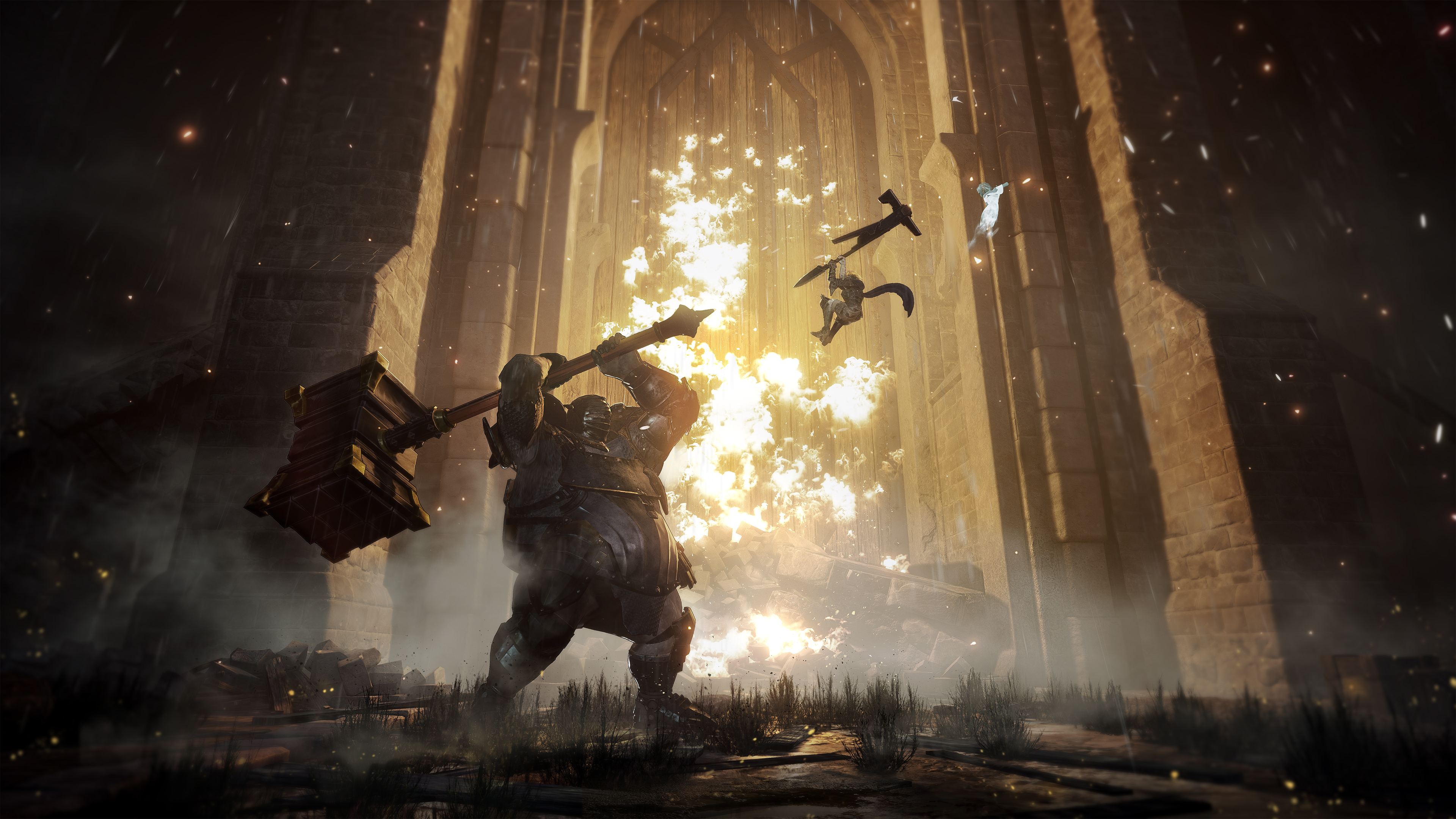Italian action game Soulstice isn't just another Dark Souls clone
Reply Game Studios is blending Japanese action and European style in its take on action games like Devil May Cry.
The seeds for Soulstice were planted back in the 1980s, when a growing crop of private television networks in Italy were hungry for shows to put on the air. Japan, it turns out, had a lot of shows ideal for kids. So anime reruns from the '70s and '80s became popular imports in Italy and France, says developer Samuele Perseo, inspiring a generation of kids like him.
"It was really in the back of our minds, of everyone doing art or creative stuff in Italy as we grew up," says Perseo. "For us it was an opportunity to define a particular style: On the one hand, we needed to find a balance because we didn't want our game to be a copycat of our sources of inspiration. It had to be a tribute. On the other hand, it was interesting for us as an independent developer—we were looking for a way to find our own signature style."
The result is Soulstice, a character-action game revealed at the PC Gaming Show on Sunday. Despite some dark fantasy vibes reminiscent of Dark Souls (and at least one big hammer-wielding enemy who looks like a dead ringer for Smough), Soulstice leans much more towards the Platinum Games school of design. Creative director Fabio Pagetti says the game is "70% combat," with the rest of the time devoted to exploration, where you'll use many of the same abilities you use in combat to traverse and interact with the world.
"Soulstice takes from the Souls games the atmosphere, not the gameplay," Pagetti says. "Combat is completely a hack-and-slash game, not the slow-paced tactical combat that you have in Dark Souls and Bloodborne. I like it a lot, I'm a big fan. But our combat is more similar to Devil May Cry, Bayonetta, and Nier combat. It's very fast."
Soulstice revolves around a pair of sisters: One wielding a giant sword reminiscent of Berserk, who you'll be controlling throughout the game, and the other the blue shade who hovers over her shoulder. I'm guessing there's some tragic backstory there—Soulstice's developers wouldn't say, but did explain that the relationship between the two factors heavily into both combat and the story. While you directly control the younger (living) sister, the shade will have contextual abilities you can trigger in combat, and more that Perseo hinted at but wouldn't spill. A "unity" mechanic will affect what abilities you can use, and I'm curious to see what kinds of actions or decisions feed into it.





Despite the obvious inspirations from Japanese action games, both developers stressed the need for Soulstice to have its own identity—also a point of pride for a game studio in Italy, which doesn't have a huge development scene.
"To my team at the beginning, I said remember, we are not Japanese," says Pagetti. "It's all a matter of culture. It's difficult to think like the Japanese people and do the same art. We need to find a more European style, because we are Italian. We need to keep a more realistic atmosphere, monsters, stuff like that, but I don't want to do characters like European studios."
Keep up to date with the most important stories and the best deals, as picked by the PC Gamer team.
Cel shading and big, manga-style eyes were a no. Pagetti's goal is for Soulstice to take the atmosphere of manga like Berserk and Claymore, landing somewhere in between conventional Japanese and European aesthetics.
Reply Game Studios' first game, Joe Dever's Lone Wolf, was a small hit on mobile and well-received when ported to PC and consoles. The studio followed with a VR game called Theseus, which helped the team learn Unreal Engine 4. Perseo points out that Theseus had impressive graphics for a small studio's VR game, but "when you pretend to play in those leagues, there's always someone who has a far bigger budget than you and hundreds of developers." They grew from about a dozen developers to 45 to make Soulstice.
"The project is big for us. But it's not a small copy of a big game. It's a true big game," says Fabio Pagetti. "We want to have the same concept of other famous games, but with our vision."
Soulstice is set to come out in 2022.

Wes has been covering games and hardware for more than 10 years, first at tech sites like The Wirecutter and Tested before joining the PC Gamer team in 2014. Wes plays a little bit of everything, but he'll always jump at the chance to cover emulation and Japanese games.
When he's not obsessively optimizing and re-optimizing a tangle of conveyor belts in Satisfactory (it's really becoming a problem), he's probably playing a 20-year-old Final Fantasy or some opaque ASCII roguelike. With a focus on writing and editing features, he seeks out personal stories and in-depth histories from the corners of PC gaming and its niche communities. 50% pizza by volume (deep dish, to be specific).

